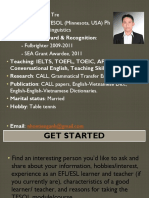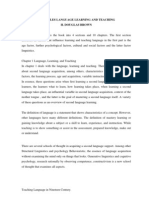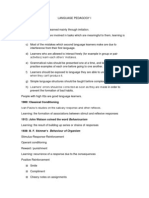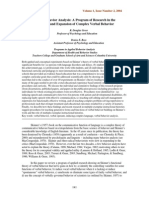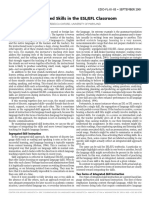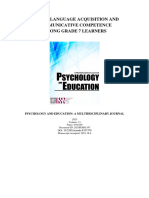0% found this document useful (0 votes)
16 views10 pagesPrinciples and Theories Keynotes
The document discusses various language acquisition models, including Behaviorism, Nativism, Interactionism, and the Competitive Model, which emphasizes learning through exposure and pattern recognition. Key concepts include the importance of rich linguistic input, form-function mapping, and the Natural Order Hypothesis in effective language teaching. Additionally, it highlights the Monitor Model, which distinguishes between subconscious acquisition and conscious learning, and the role of emotional factors in language acquisition.
Uploaded by
John Lester VillamoraCopyright
© © All Rights Reserved
We take content rights seriously. If you suspect this is your content, claim it here.
Available Formats
Download as DOCX, PDF, TXT or read online on Scribd
0% found this document useful (0 votes)
16 views10 pagesPrinciples and Theories Keynotes
The document discusses various language acquisition models, including Behaviorism, Nativism, Interactionism, and the Competitive Model, which emphasizes learning through exposure and pattern recognition. Key concepts include the importance of rich linguistic input, form-function mapping, and the Natural Order Hypothesis in effective language teaching. Additionally, it highlights the Monitor Model, which distinguishes between subconscious acquisition and conscious learning, and the role of emotional factors in language acquisition.
Uploaded by
John Lester VillamoraCopyright
© © All Rights Reserved
We take content rights seriously. If you suspect this is your content, claim it here.
Available Formats
Download as DOCX, PDF, TXT or read online on Scribd
/ 10


































